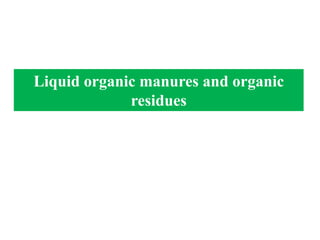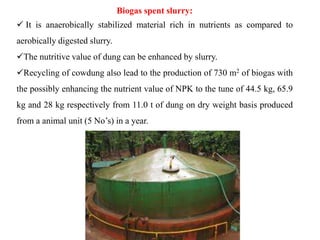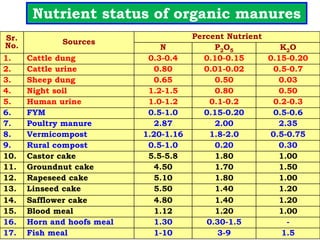Liquid organic manures are produced from fermented organic matter like crop residues, animal waste, and plant materials. They provide nutrients to plants and can act as pest control. While organic manures slowly release nutrients, a combination with other organic amendments like green manures and composts can better meet crop nutrient needs. Several types of liquid organic manures are described, including jeevamrutha, panchagavya, beejamrutha, biogas spent slurry, and their production methods and benefits are outlined.


























